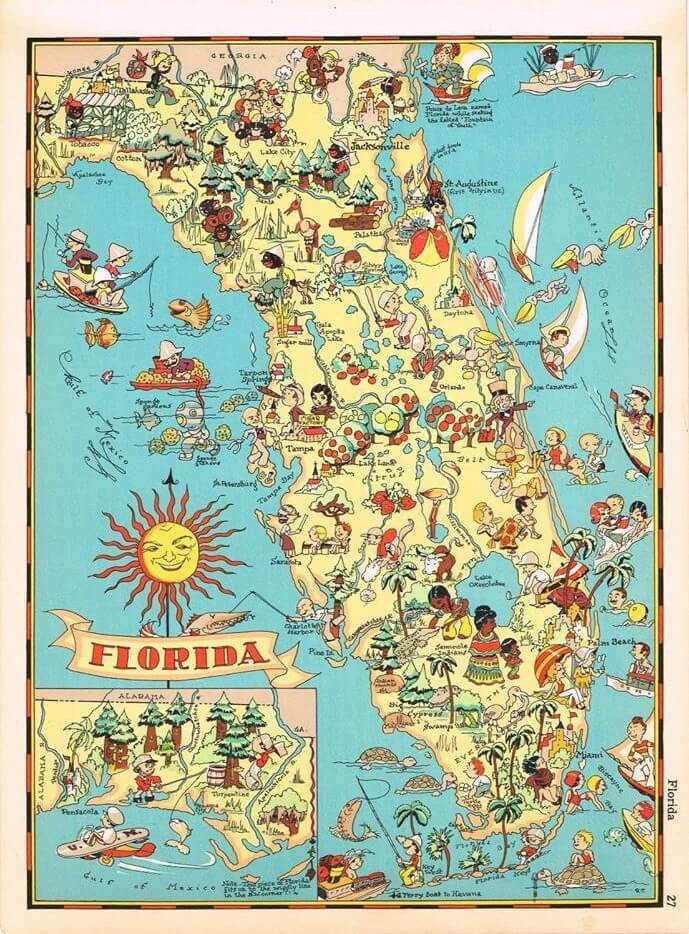- Home
- Day Trips by Theme
- Freedom Tower Miami
FREEDOM TOWER MIAMI
By Mike Miller Updated September 18, 2025
As part of its 100th year anniversary, the renovated Freedom Tower reopened to the general public as a museum on Sept. 16, 2025. The tower has undergone a two-year, $25 million rehab.
The 17 story Freedom Tower in Miami is an iconic building that has profound meaning for millions of Americans. It is located on Biscayne Boulevard in downtown Miami on the Wolfson Campus of Miami Dade College.
It is treasured by the many immigrants forced to leave their homes in Cuba after the takeover by Fidel Castro.
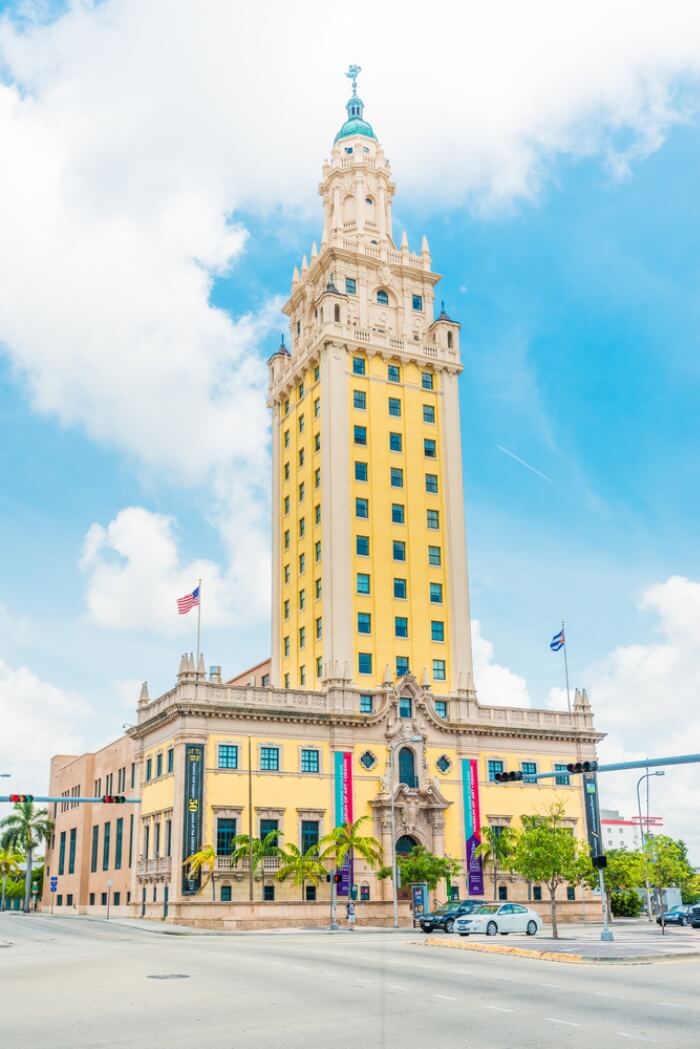 Freedom Tower
Freedom TowerShutterstock
It is also treasured by Americans like me whose families have been here for many generations. For us it is a symbol of how great America is.
The Freedom Tower is a reminder of how the United States remains the single most desirable place people from all over the world dream of moving to.
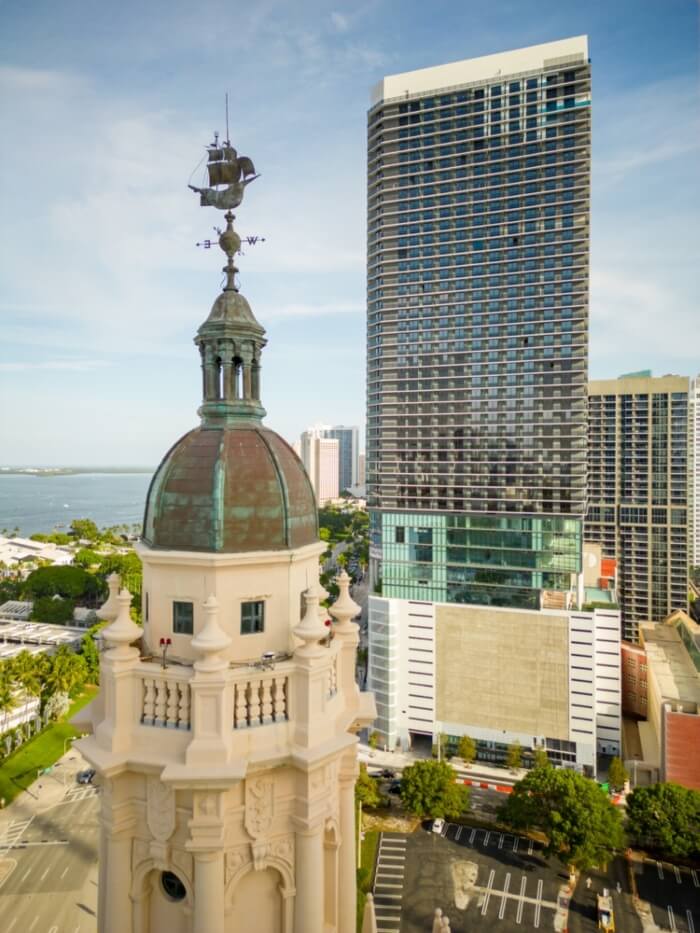 Freedom Tower Cupola
Freedom Tower CupolaShutterstock
HISTORY OF MIAMI FREEDOM TOWER
James M. Cox was a two term governor of Ohio and the Democratic nominee for President of the United States in 1920. Franklin D. Roosevelt was his Vice Presidential running mate.
Cox lost to Warren G. Harding, retired from politics, and continued his business career which included founding a chain of newspapers that still exists: Cox Enterprises.
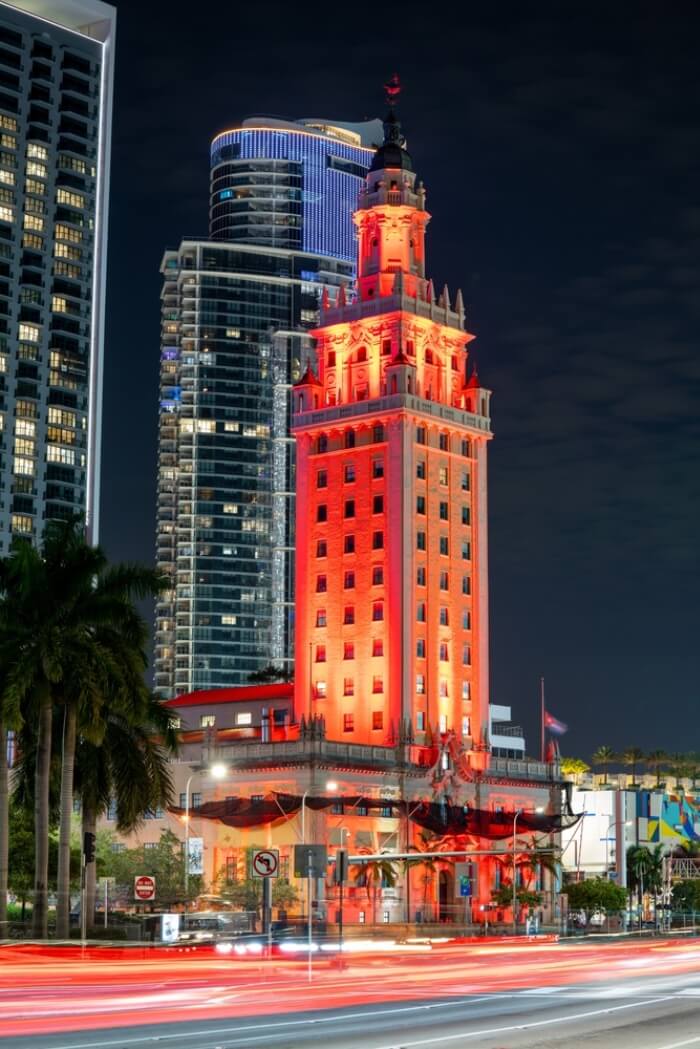 Freedom Tower at Night
Freedom Tower at NightShutterstock
The Miami News was the main competition to the Miami Herald for much of the early 20th century. In 1923, James M. Cox bought the paper and in 1925 renamed it the Miami Daily News.
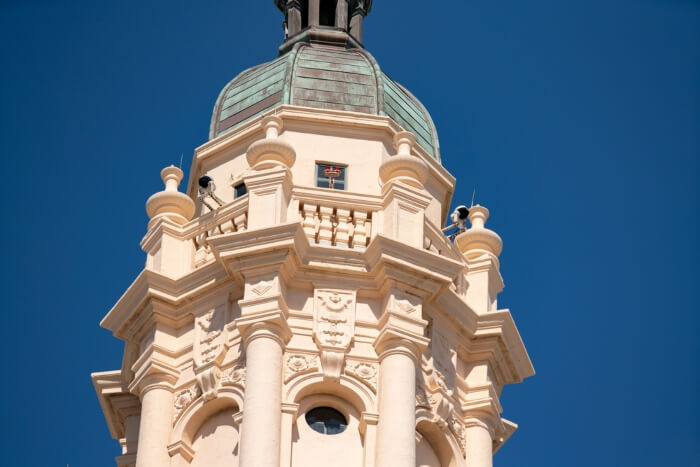 Freedom Tower Cupola
Freedom Tower CupolaShutterstock
Cox began construction in 1924 on a new building facing Biscayne Bay and named it the Miami News Tower. It was later renamed the Freedom Tower
The building was dedicated in July 1925 in conjunction with a Miami Daily News edition of 508 pages, the largest for any newspaper in history, a record which still stands.
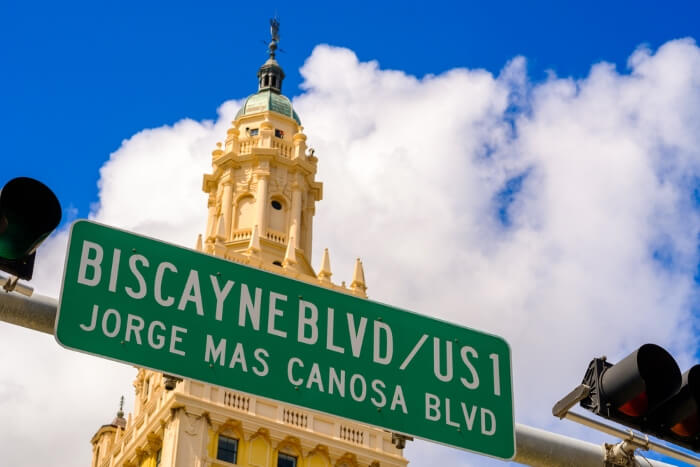 Street Honoring Freedom Tower Benefactor
Street Honoring Freedom Tower BenefactorShutterstock
The building was designed by the New York architects Leonard Schultze and S. Fullerton Weaver. Their design was influenced by the beautiful Giralda Tower in Seville, Spain. These architects also designed the Biltmore Hotel in Coral Gables.
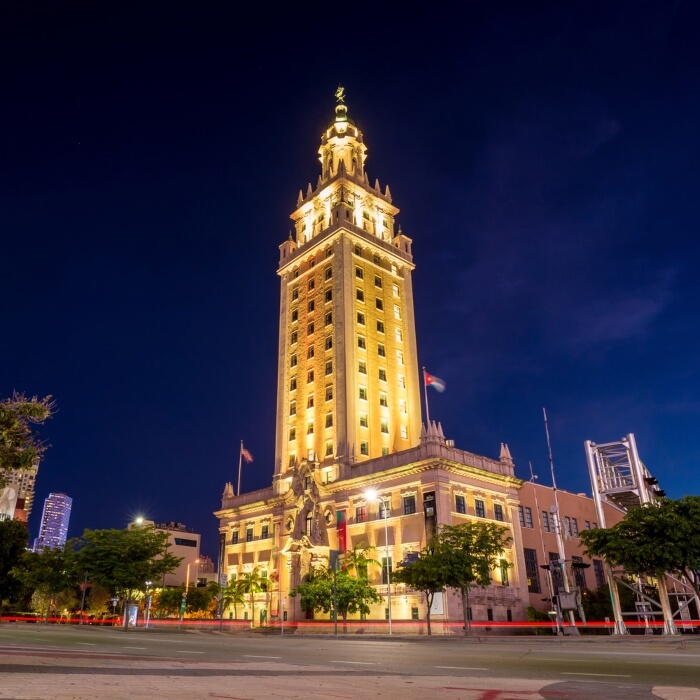 Freedom Tower Miami at Night
Freedom Tower Miami at NightShutterstock
The architectural motif of the building is an example of Mediterranean Revival style.
The building has a combination structural steel and reinforced concrete frame. The tower sits on a three-story base where many of the newspaper's office and printing operations were located.
The exterior of the building was finished in stucco with many ornate cast concrete details. The building when completed had 82,000 square feet of space.
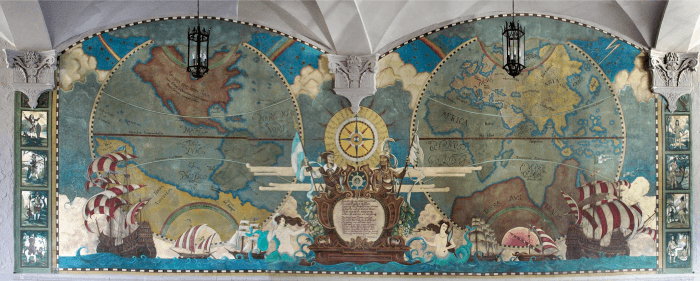 Freedom Tower Interior Mural
Freedom Tower Interior MuralThe top of the tower had a decorative beacon that could be seen from miles away. The building had a view of Biscayne Bay, the Port of Miami, and Miami Beach.
The first test of its structural integrity was when it survived the devastation of the infamous hurricane of 1926 that spelled the end of the Roaring Twenties Florida real estate boom.
From its very beginning, the tower has been one of Miami's most beloved buildings.
THE 1959 CUBAN REVOLUTION
The Miami Daily News vacated the building in 1957 and moved into more modern buildings and the building was mostly vacant for a few years.
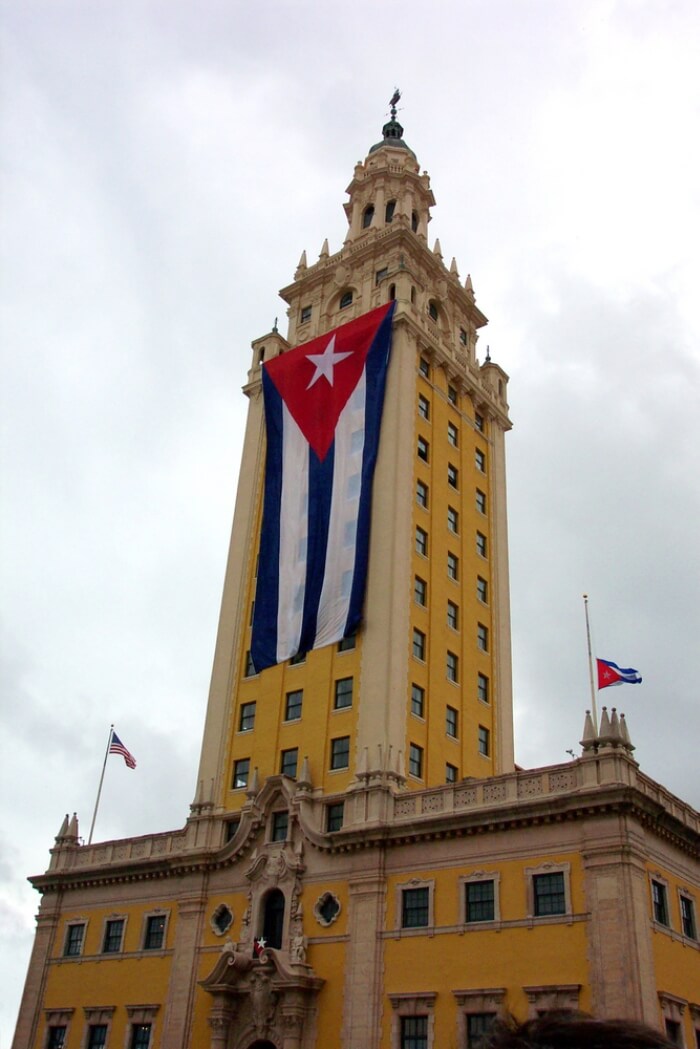 Freedom Tower Miami With Cuban Flag
Freedom Tower Miami With Cuban FlagShutterstock
After The Fidel Castro communist regime took control of the Cuban government in 1959, thousands of Cubans left their country and headed for Miami hoping to find a new life.
Federal immigration agents flocked into Miami and there was a need for office space.
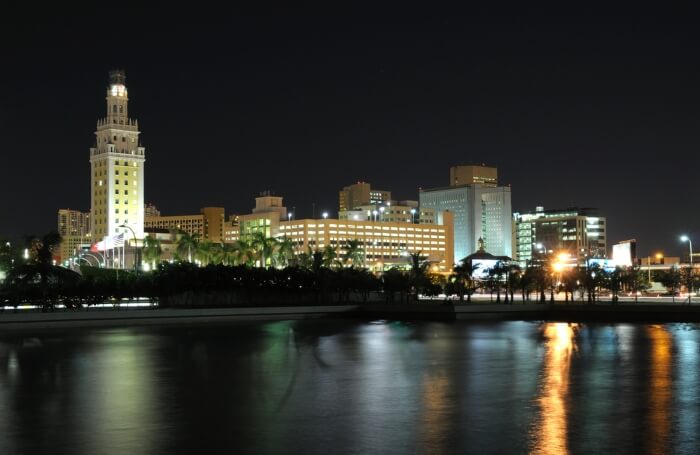 Freedom Tower Miami at Night from Biscayne Bay
Freedom Tower Miami at Night from Biscayne BayShutterstock
The federal government General Services Administration leased the first four floors of the building in 1962. For the next 12 years, Cuban refugees were processed through this building.
It served as a Cuban assistance center providing medical and dental service to the refugees.
This is when the name Freedom Tower began to be used and nicknamed "the Ellis Island of the South."
Local businessman and Cuban immigrant Jorge Mas Canosa bought the building and dedicated it to the Cuban refugees. He was the leader of the Cuban American National Foundation.
CHANGES TO FREEDOM TOWER OVER THE YEARS
After the Mas family sold the Freedom Tower, several private buyers tried different schemes to make the building profitable.
In the 1980s a Saudi Arabian conglomerate hired architect Richard J. Heisenbottle to manage an extensive restoration of the building.
The project was going to turn the building into an office building and banquet hall. but the venture failed.
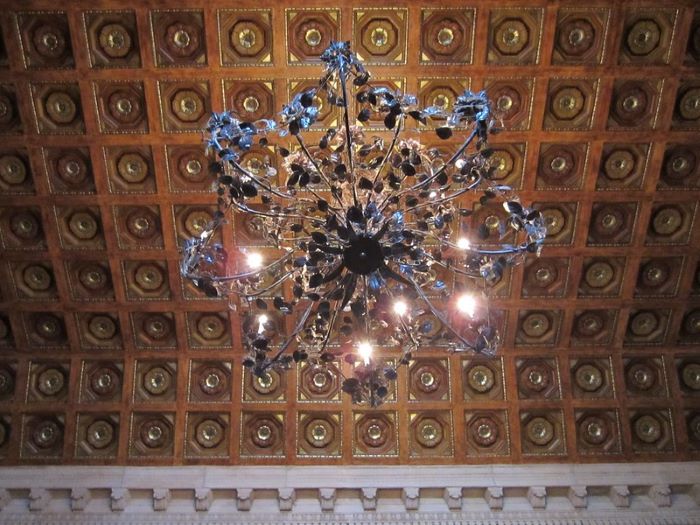 Freedom Tower Chandelier
Freedom Tower ChandelierFlickr/Phillip Pessar
After this, several other entities bought the building with various plans that didn't work out.
In 2005 the Cuban-American president of Miami Dade College, Eduardo Padron, directed the transfer of the building to the college.
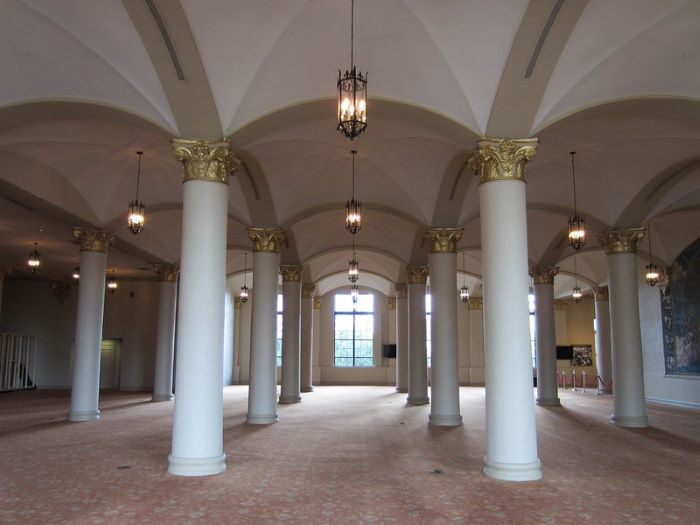 Freedom Tower Interior Columns
Freedom Tower Interior ColumnsFlickr/Phillip Pessar
Today the building houses classrooms, offices and the Museum of Art and Design. It features many art exhibitions, events, and education programs.
Freedom Tower has been designated a U.S. National Historic Landmark by the National Park Service of the U.S. Department of Interior.
FREEDOM TOWER MIAMI TODAY
The State of Florida approved a $25 million restoration project with financial assistance funded by the state. The renovation involves important structural, plumbing, electrial and cosmetic repairs.
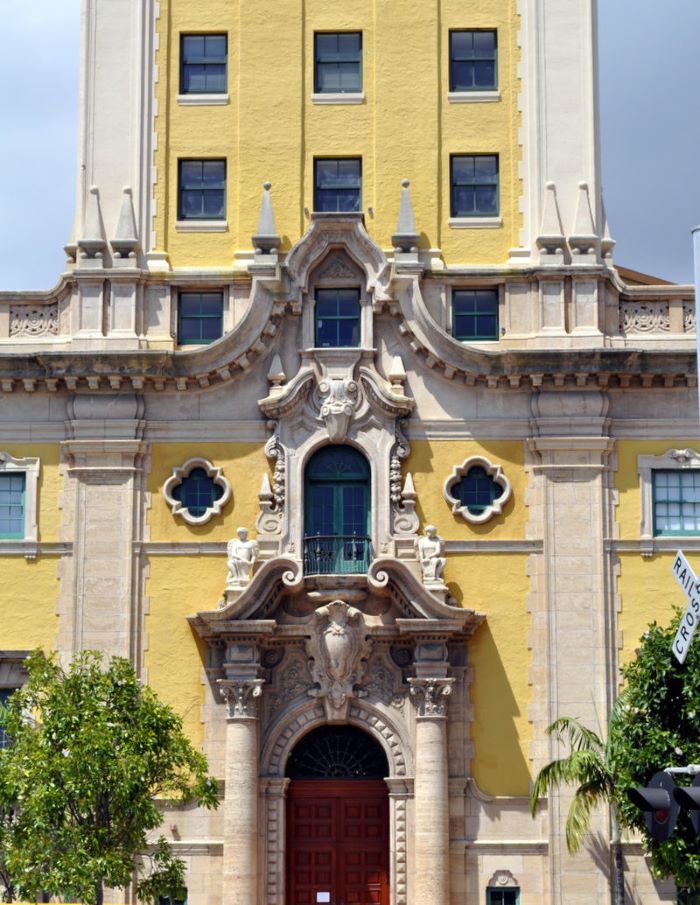 Freedom Tower Front Entrance
Freedom Tower Front EntranceWikipedia
The exterior appearance and design elements of the building will be preserved to look like it always has and its most popular exhibits will still be located there.
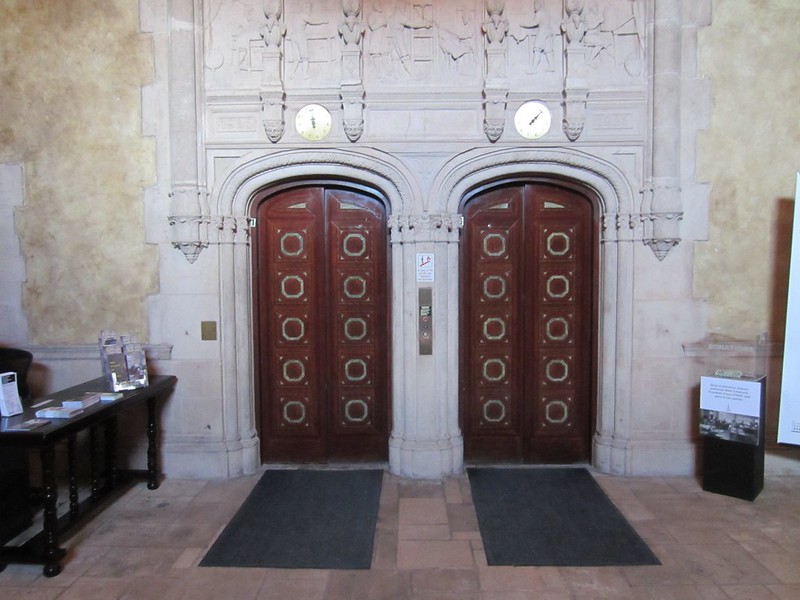 Freedom Tower Elevator Doors
Freedom Tower Elevator DoorsFlickr/Phillip Pessar
Some of the exhibits include the Kislak Center collection of rare historical books, manuscripts, and other items that trace the civilization that shaped the western hemisphere.
The exhibits and gallery that tell the story of the Cuban exile experience will still be there in the Cuban Legacy Gallery.
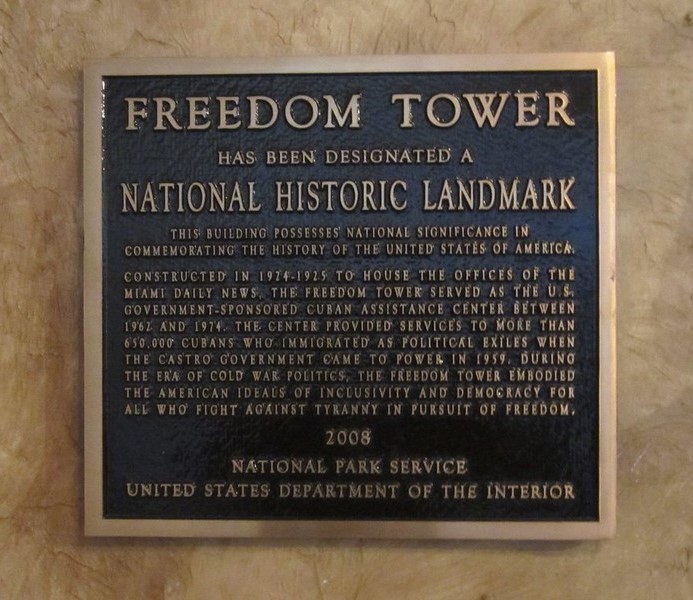 Freedom Tower National Historic Landmark Plaque
Freedom Tower National Historic Landmark PlaqueFlickr/Phillip Pessar
There will also be major exhibitions that show how the Cuban exiles had such a profound positive impact in Miami, south Florida, and the state.
The restoration work is expected to be completed in 2025, the 100th anniversary of the birth of the building.

Florida is the fastest-growing state in the United States and also the fastest-changing. If you see anything in this article that has changed or is in error, please let me know.
Our free daily Ezine, Florida Heritage Travel, has 18,000 subscribers. We also have 130,000 followers on Facebook who love off the beaten path Florida.
By Mike Miller, Copyright 2009-2025
Florida-Back-Roads-Travel.com
Florida Back Roads Travel is not affiliated with or endorsed by Backroads, a California-based tour operator which arranges and conducts travel programs throughout the world.
